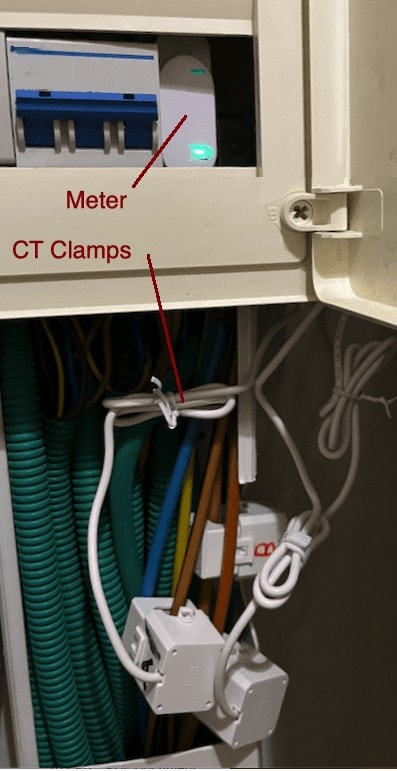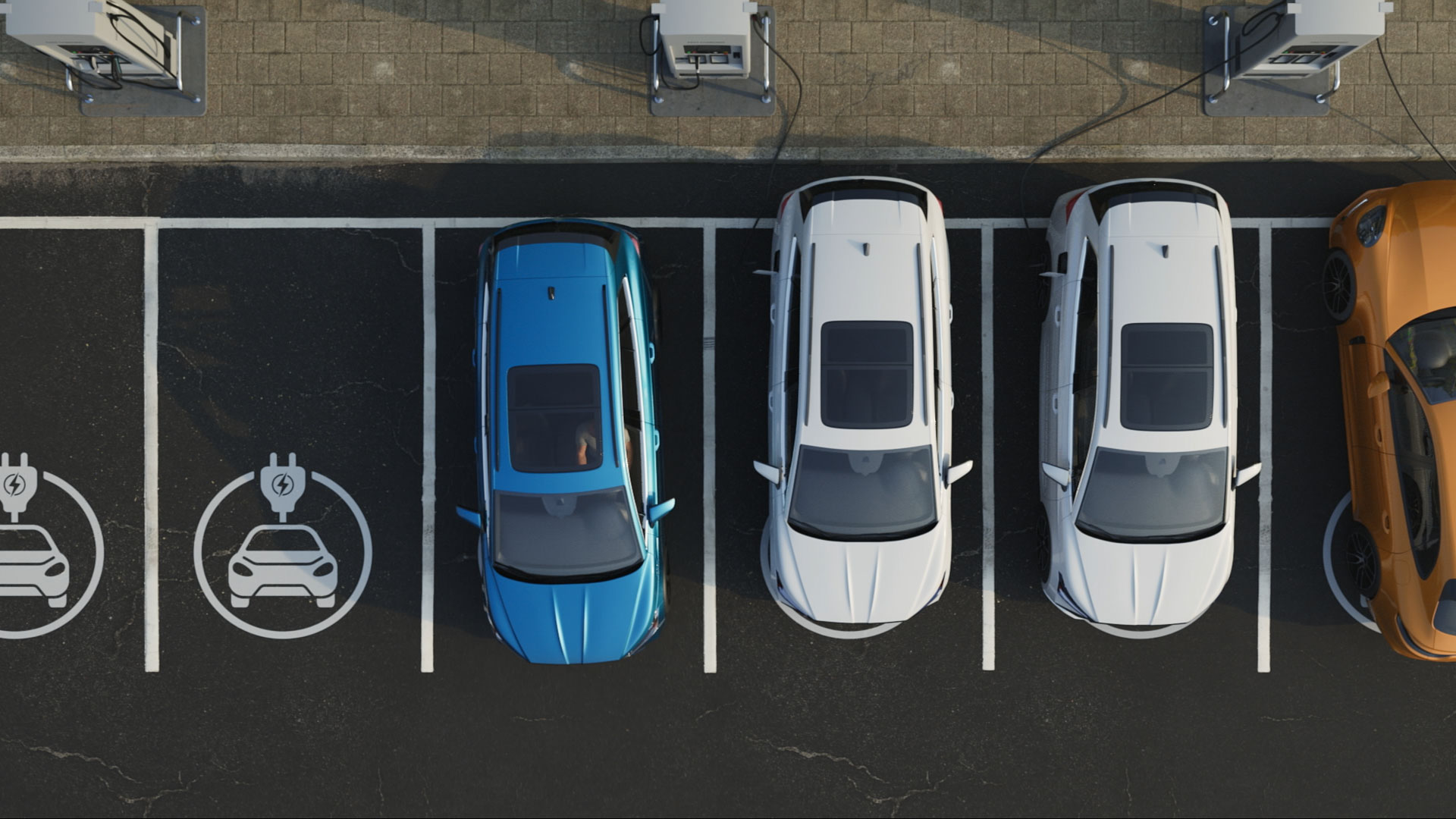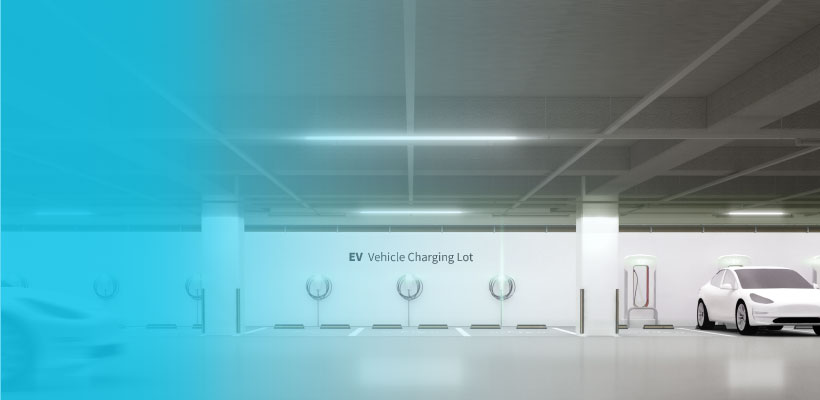When designing electric vehicle (EV) charging systems, there’s much to consider regarding power management. That’s why electricians, operators, and proprietors must be aware of the load balancing EV charger options available for efficient and reliable system operation. Here’s a quick explanation of static and dynamic load balancing and how it can keep your EV network running smoothly.
What is electric vehicle (EV) charging load balancing?
EV charging load balancing is the heart of an EV load management system, especially for commercial and apartment buildings. It optimizes the ability to charge multiple EVs simultaneously based on real-time data collected from connected chargers and building infrastructure.
Load sharing for EV chargers, or choosing the right load balancing EV charger system, helps reduce strain on building infrastructure as EV use fluctuates throughout the day. The system monitors both site and charger loads in real time, making sure each EV gets enough power while keeping efficiency high.
Dynamic vs. Static Load Balancing
To optimize EV charging efficiency, it’s essential to understand both static and dynamic load balancing.
Static Load Balancing (SLB) relies on a predefined, static site power allocation. It does not consider changes in non-EV usage, which would require additional curtailment to prevent overloads.
Dynamic Load Balancing (DLB) uses a current meter to continuously measure available power, adjusting resource allocation in real time as demand changes. This allows for better power allocation to reduce any risk of overloading the network while also providing operational cost savings.
How can you implement load management in your parking lot?
Implementing EV charging load balancing in your parking lot is a smart way to make the most of your site’s capacity. Any OCPP (Open Charge Point Protocol) capable charger can connect to a cloud-based Charge Point Management System (CPMS). The CPMS allows for the coordination and configuration of chargers, enabling load sharing for EV chargers and optimizing energy management. This allows for easier oversight and optimization of charging operations, reducing downtime and providing flexibility to control peak demand times as needed. With load balancing, you’ll be able to provide increased charger capacity to your customers without blowing a fuse.
Wevo Energy’s DLB implementation
The Wevo CPMS platform offers powerful support for dynamic load balancing, with these standout features:
- Hierarchical load management – Installers and operators can easily define and implement the full site electrical topology (Panels, Sub-panels, chargers, etc.), including amperage limits for each panel and charger. The system will use this information to avoid overloading any circuit when managing the chargers.
- Works with every charger – Wevo’s platform is one of the few systems globally to have received the prestigious full OCPP Certification. This is a testimony of the platform’s quality and ability to work with any OCPP-certified charger.

Wevo Energy’s platform is one of the few to have been certified for both OCPP and OCPP Security.
- Static and dynamic load balancing support – Use static load balancing by assigning static limits to each panel. This is effective when residual (non-EV) loads don’t fluctuate much throughout the day. Activating Dynamic Load Balancing (DLB) is simple: just add a meter and point it to the Wevo platform.
Dynamic Load Balancing using a sub 150 EUR meter connected to the Wevo platform
- Delayed charging with boost support – A site can be configured to prioritize off-peak charging aligned with the Time-of-use tariff. This feature is frequently used in apartment buildings for overnight charging. When configured, charging will be delayed to nighttime when the electricity rates drop. The system will then ensure all EVs are fully charged in the morning. Drivers can always charge immediately, at extra cost, by pressing the ‘Boost button’ on the mobile App.
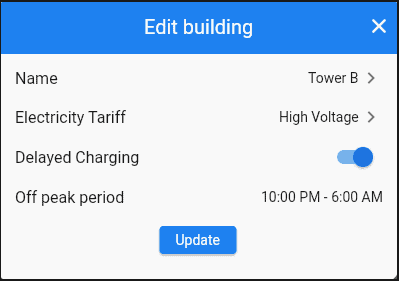
The Wevo platform is electric tariff-aware and can enable delayed charging on a per-building basis.
- Full, real-time transparency – The Wevo platform provides a rich interface showing real-time and historical data. As shown in the image below:
- The Hao St 6 site has four electric panels, 3x40A each.
- Panel 6-03 has three vehicles connected and charging: a single-phase vehicle, a three-phase vehicle, and a dual-phase vehicle.
- Due to the constraints of the parent panel, chargers have been energy managed to 13A each.
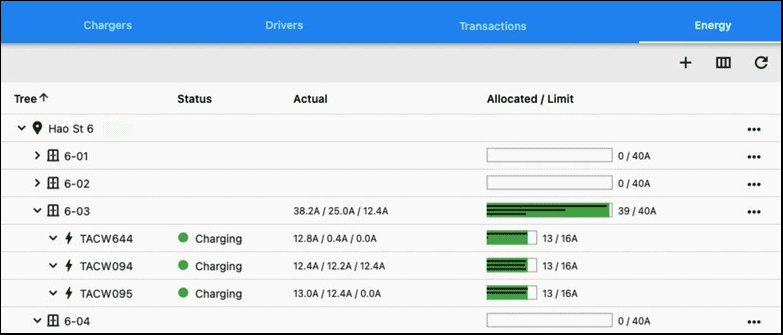
Wevo’s ‘Energy View’ shows real-time energy allocation (green) and actual usage (black lines)
Case study: how TLV Towers saved money with Wevo Energy’s Dynamic Load Management
TLV Towers, a premium residential apartment complex, recently improved in their energy usage and costs thanks to Time of Use (TOU) Tariffs and Dynamic Load Balancing (DLB).

Using the Wevo platform, residents could access cheap electricity by shifting charging to off-peak hours. This resulted in over 40% EV cost savings. The entire four-story parking lot is fed from a single 3x40A panel without requiring expensive capacity upgrades.
This enabled residents to get more savings without compromising satisfaction and comfort. Ultimately, TLV Towers’ success shows how load balancing benefits both your budget and the environment.
